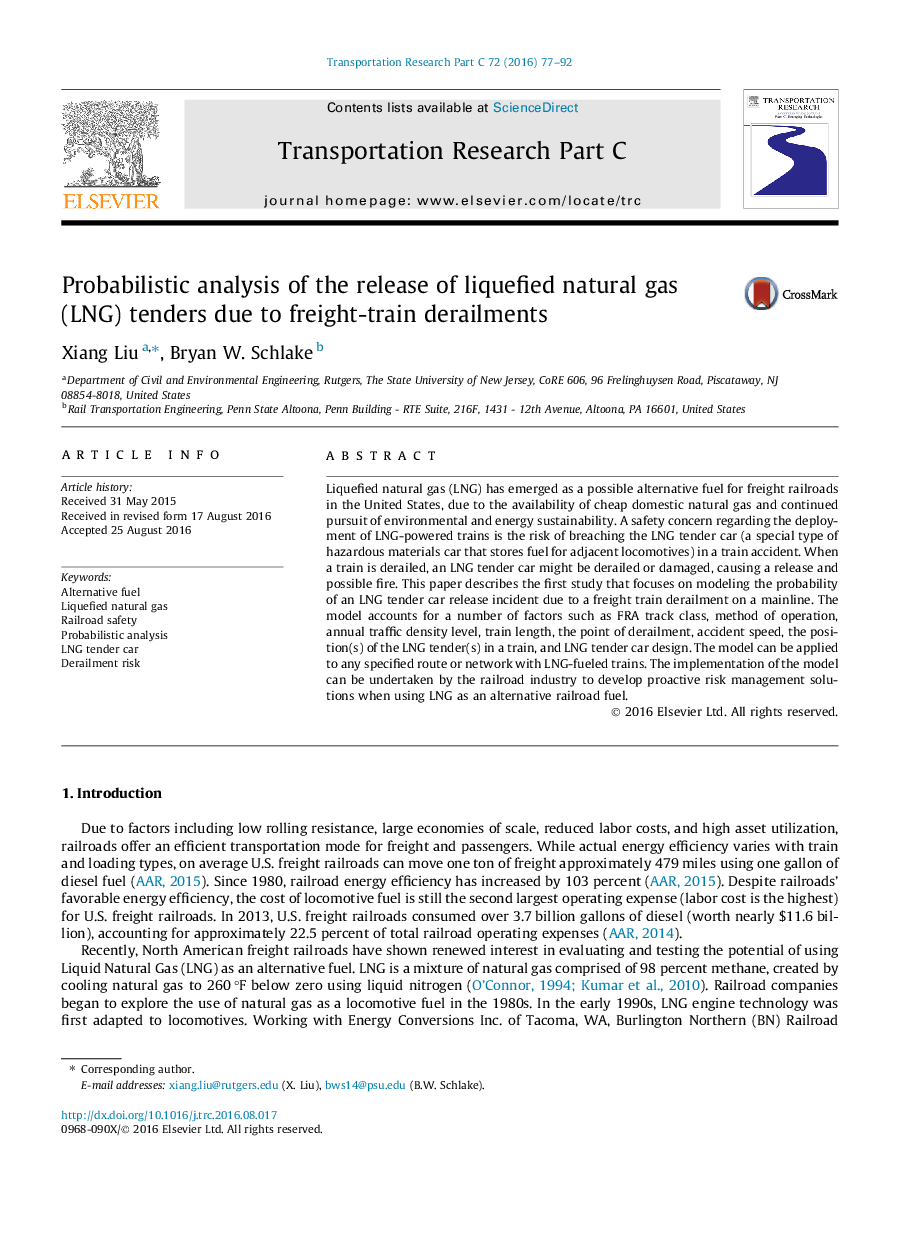| Article ID | Journal | Published Year | Pages | File Type |
|---|---|---|---|---|
| 4968672 | Transportation Research Part C: Emerging Technologies | 2016 | 16 Pages |
Abstract
Liquefied natural gas (LNG) has emerged as a possible alternative fuel for freight railroads in the United States, due to the availability of cheap domestic natural gas and continued pursuit of environmental and energy sustainability. A safety concern regarding the deployment of LNG-powered trains is the risk of breaching the LNG tender car (a special type of hazardous materials car that stores fuel for adjacent locomotives) in a train accident. When a train is derailed, an LNG tender car might be derailed or damaged, causing a release and possible fire. This paper describes the first study that focuses on modeling the probability of an LNG tender car release incident due to a freight train derailment on a mainline. The model accounts for a number of factors such as FRA track class, method of operation, annual traffic density level, train length, the point of derailment, accident speed, the position(s) of the LNG tender(s) in a train, and LNG tender car design. The model can be applied to any specified route or network with LNG-fueled trains. The implementation of the model can be undertaken by the railroad industry to develop proactive risk management solutions when using LNG as an alternative railroad fuel.
Related Topics
Physical Sciences and Engineering
Computer Science
Computer Science Applications
Authors
Xiang Liu, Bryan W. Schlake,
